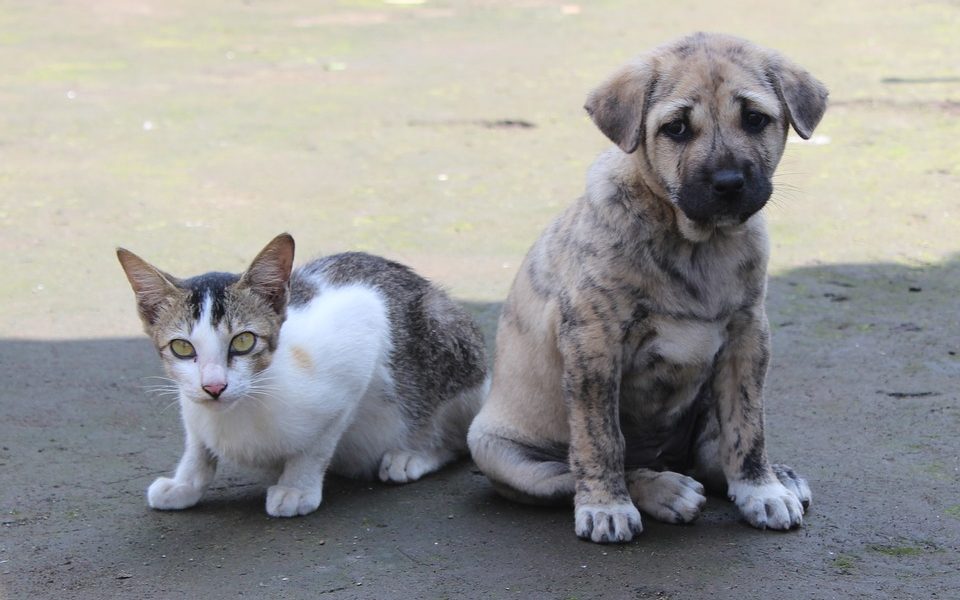COURTESY PHOTO
The status of Florida animal shelters over the past 18 months has improved despite the onset of the COVID-19 pandemic, bringing significant changes to the operation of some shelters and the focus on the services they provide. But a lot of progress remains to be made.
The rate of “savings” for most shelters has increased, but shelters are still at full capacity and the influx of cats and kittens during the “annual kitten season”, usually between April and October, when cats often have their litters, was higher than usual. .
Popular belief has been that pet adoptions have increased in the first few months of the pandemic, but statistics show this is not true overall nationwide, statewide. and among local shelters.
“It is a commonly repeated myth that families confined to the house adopted more pets during the pandemic,†according to the Florida Shelter Animal Census 2020, compiled by the Maddie’s Shelter Medicine Program at the University of Florida College of Veterinary Medicine.

2020 Florida Shelter Animal Census (as of 6-11-21)
The study looked at 154 brick-and-mortar shelters in all counties in Florida, not including rescue groups that lack physical facilities. Of that number, 147 responded with data.
Permanent adoptions in Florida have increased from 204,215 in 2019 to 172,407 in 2020, according to the study.
This is in part due to the fact that the supply of animals has also dropped at all levels nationally, state and locally. Some shelters have limited hours or even suspended admissions. Many have focused their efforts on keeping animals out of shelters in the first place, working with pet owners to address the issues that prompted them to decide to hand over animals, whether for services veterinarians, behavioral or food problems.
However, the number of people wanting to welcome pets to shelters has increased significantly. Danielle Somerville, Animal Services Program Coordinator for Collier County Domestic Animal Services, remembers that at the start of the pandemic, when people started being confined to the house, she came to work and there were people doing queuing at the door of their shelter to foster animals. They were worried about what would happen to the animals if the shelter closed, she said. “It was incredibly rewarding. It was the part of the pandemic that was enjoyable. “
Many shelters are now partnering more with other animal shelters and rescue groups, helping each other when they are at full capacity or have a case with special needs. Lee County Domestic Animal Services now partners with 82 shelter and rescue groups across the state, the most recent in Kissimmee, said Karen Fordiani, public information specialist. Some of these are breed specific or focus on small animals, cat rescues or foster families.
One success story is the case of Khaleesi, a dog who was found nearly starved to death on August 11 in Lehigh Acres, her skeletal body barely able to stand. Lee County Domestic Animal Services sent the dog to Mutty Paws Rescue in West Palm Beach. Foster Rescue is dedicated to providing medical care and rehabilitation to animals facing ‘death row’. Khaleesi has now gained 10 pounds and is in foster care on the slow but steady road to recovery.
A total of 313,547 cats and dogs were admitted to shelters in Florida in 2020. Other highlights from the University of Florida study:
¦ Free-roaming / stray cats and dogs accounted for more than half of all intakes.
¦ Live results were obtained for 87% of animals brought to shelters in Florida, a jump of 33% since 2013. This number rose to 91% if 10,697 animals brought to shelters specifically for euthanasia services were not included.
¦ Adoptions (63%) were the main route of live outcomes, followed by transfers to other groups (17%), return to owner (10%) and return to field of community chats (8%).
¦ Euthanasia of dogs has decreased by 78% and that of cats has decreased by 81% since 2013.
Saving the cats remains the biggest challenge. Nationally, they are taken to shelters more than twice as many as dogs. Statewide and locally, a ratio of nearly 2 to 1 is common.
The University of Florida study says live results for cats (84%) are consistently lower than for dogs (91%). Almost twice as many cats are euthanized as dogs.
As Florida sees gains internally, a national study titled “The State of US Animal Sheltering 2020” by Best Friends, a leader of the no-kill movement, ranks Florida 4th in the country in terms of the number of cats. and dogs in need of rescue, with 24,289.
The commonly accepted benchmark for a no-kill animal shelter is a savings rate of 90%. Best Friends calls the difference between a shelter’s current savings rate and the non-elimination benchmark the “life-saving gap.”
Six states: Texas, California, North Carolina, Florida, Alabama and Louisiana, account for 50.4% of the survival gap in the country, according to the study.
On a positive note, the vital gap for all six states, and nearly every other state in the country, narrowed in 2020. Florida fell 46.6% from 45,503 cats and dogs in need of care. be saved at 24,289.
Nationally, there was a 44.6% drop, from 625,400 dogs and cats to 346,622.
There is a lack of consistency in how animal shelter data is defined and tracked nationally. There is no mandatory declaration at the federal level. Best Friends started compiling their brick and mortar shelter database around 2010.
Lee County Domestic Animal Services is one shelter that has seen an increase in adoptions during the pandemic. “We were very lucky,†Ms. Fordiani said. The latest monthly snapshot shows that in August the dog adoption rate was 26%, an increase from the August 2020 rate, which was 11%. For cats, the August rate was 34%, an increase from the August 2020 rate, which was 26%.
The shelter is full and facing the last days of kitten season, which sometimes sees 30 to 50 kittens and cats entering a day, she said.
They are a wandering facility and don’t get many homeowners, she said. People to adopt, host and volunteer are badly needed.
Autumn is here, and Ms Fordiani is hoping that cooler weather and more outdoor events attract more people so they can have the chance to see animal figures and maybe bring one home. .
The refuge is also partnering more with other shelters and rescues. In 2020, she sent 10% of her dogs to the rescue. In 2021, it rose to 21%.
Ironically, sometimes a change of location seems to give a pet a better chance at adoption. Ms Fordiani recalls that a dog that had been at the shelter for about three months without being adopted was transferred to the Gulf Coast Humane Society. Apparently it looked like a different dog there, as he was adopted within a week, she said.
The Animal Refuge Center in North Fort Myers is “more than full,” said Betty Hughes, board member and treasurer. The nonprofit is the largest no-kill refuge / sanctuary in Southwest Florida.
During the first months of the pandemic, the center remained open to treat animals but closed to the public for several months. Then, they opened for adoptions by appointment only and gradually added visitation by appointment. This policy continues.
“The economic difficulties have intensified as our donor base has been affected by the closure of businesses or the reduction in hours,” said Ms. Hughes. “The tough decisions about our ability to accommodate cats and dogs with expensive medical / surgical needs are negatively affected. “
Since the onset of COVID, their dog adoptions have fallen by 50% and cat adoptions by 30%, she said. Donations are also declining.
“With COVID, we are providing counseling on behavioral issues for families through things we know have worked for our pets, but also online resources,†she said. “Every animal that can be kept in a house is a victory for the animal.” Other challenges have been sterilization / sterilization resources which have been reduced in facilities that offer this service, she said. “Trap-Neuter-Release was also reduced in Lee County, which created a lot more litters.”
There have been several emergencies, and “here in the rescue world it’s really hard to say no,” she said. For example, a DeSoto County shelter was closing in 2020 and was at risk of having to euthanize 100 cats, Ms Hughes said. They were able to save the cats, took in 50 of them, and another 50 went to other shelters. Two-thirds of the cats ended up being adopted.
Kitten season blast shelters are “insane,†Ms. Hughes said. She’s been doing this for 20 years and has never seen anything like it. “I did bottle farming non-stop for 10 months,†she said.
Staffing is also a major challenge.
“We want to expand. We have the land, â€said Ms. Hughes. A brand new cat building will be completed in two months which will house 80 cats – if they can get more financial support to complete it and if they are able to staff it, she said.
“In the rescue world, you just have to keep the faith that kind-hearted people will come forward.” ??
In the KNOW
Calendar year 2020 cat and dog consumption and outcome data is self-reported by brick-and-mortar animal shelters only. Out of 154 shelters, 147 provided statistics. Figures reported for a particular county do not refer to a single county facility, but to facilities that reported in that county.
Live contributions include owner abandonment, wandering, transfer, other euthanasia and owner requested euthanasia
Actual results include adoption, return to owner, transfer, return to the field and others
The live result rate was calculated as (live result) / (live input)
SOURCE: UNIVERSITY OF FLORIDA COLLEGE OF VETERINARY MEDICINE.
 Christ Yoder
Christ Yoder



/cloudfront-us-east-1.images.arcpublishing.com/gray/P5XQ6ZYQXVAM5MQ7O2X7G7SRHI.jpg)